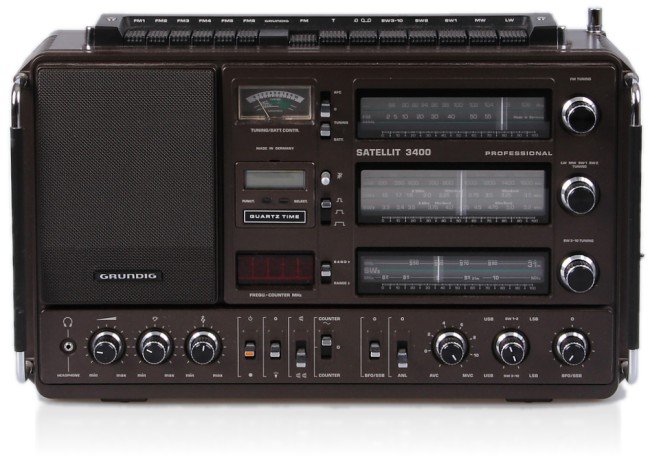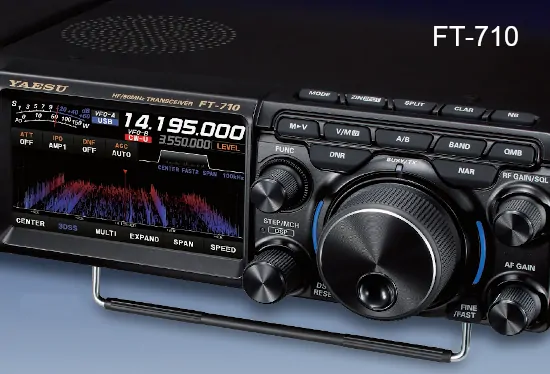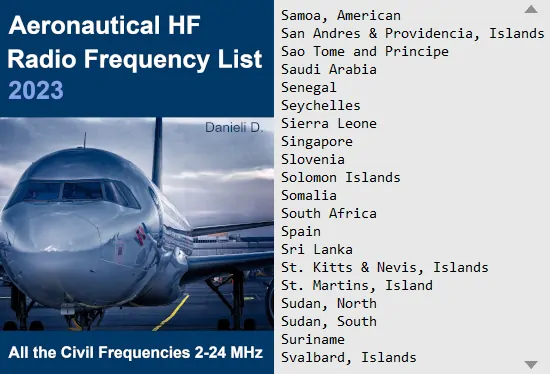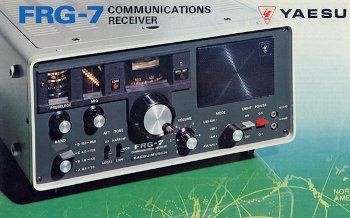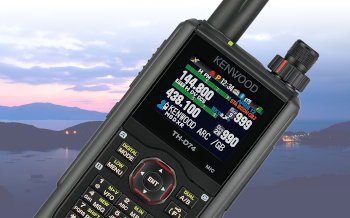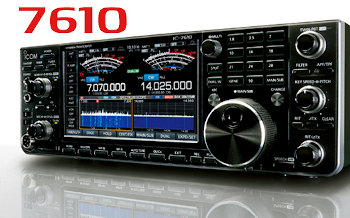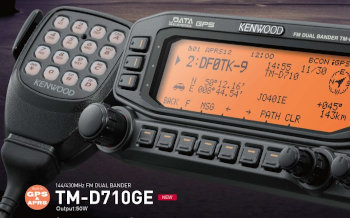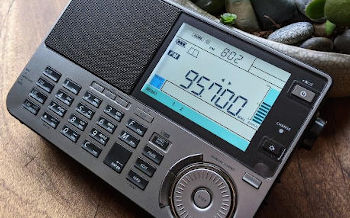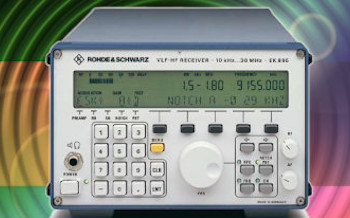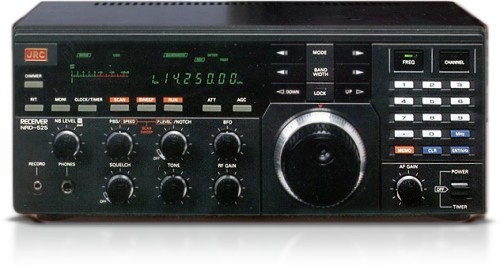
Double-conversion HF desktop receiver. Analogical configuration, frequency range 0.09-34 MHz all-mode with IF notch filter. Ideated in Japan, year of introduction 1986.
Reference market : amateur-radio
NRD-525 specifications
| General |
| Frequency coverage | |
|---|---|
| 0.0900 ~ 34.0000 MHz
34.0000 ~ 60.0000 MHz [1] 114.0000 ~ 174.0000 MHz [1] 423.0000 ~ 456.0000 MHz [1] |
|
| Mode | |
| CW / RTTY / LSB / USB / AM / FM | |
| Tuning step | |
| 10 Hz
1 MHz |
| Receiver |
| Sensitivity | |
|---|---|
| CW / SSB | 5.0 uV (0.09~1.6 MHz, 10dB S/N)
0.5 uV (1.6~34 MHz, 10dB S/N) 1.0 uV (VHF~UHF, 10dB S/N) [1] |
| RTTY | 5.0 uV (0.09~1.6 MHz, 10dB S/N)
0.5 uV (1.6~34 MHz, 10dB S/N) 1.0 uV (VHF~UHF, 10dB S/N) [1] |
| AM | 15.0 uV (0.09~1.6 MHz, 10dB S/N)
2.0 uV (1.6~34 MHz, 10dB S/N) 3.0 uV (VHF~UHF, 10dB S/N) [1] |
| FM | 0.7 uV (1.6~34 MHz, 20dB SINAD)
1.5 uV (VHF~UHF, 20dB SINAD) [1] |
| Selectivity | |
| SSB | > 2.0 KHz (-6dB)
< 6.0 KHz (-60dB) |
| AM | > 4.0 KHz (-6dB)
< 10 KHz (-60dB) |
| FM | > 12 KHz (-6dB) |
| IF filter ultimate attenuation [2] | |
| 65 dB | |
| RF attenuator | |
| 20 dB | |
| DR (Dynamic Range) | |
| 100 dB
95 dB (50 KHz spaced signals) [2] 72 dB (5 KHz spaced signals) [2] |
|
| Blocking [1] | |
| 123 dB (100 KHz spaced signal) | |
| Image rejection | |
| > 70dB | |
| IF rejection | |
| > 70dB | |
| PBT (Passband Tuning) | |
| > ±1 KHz | |
| Notch filter | |
| > 30dB | |
| RIT (Receiver Incremental Tuning) | |
| > ±5 KHz | |
| AGC (Automatic Gain Control) | |
| Fast, slow | |
| Frequency stability | |
| ± 3ppm max | |
| IF (Intermediate Frequency) | |
| 1° | 70.453~70.454 MHz |
| 2° | 455.0 KHz |
| Features |
| Memory | |
|---|---|
| 200 regular memories
2 for programmed scan limits |
|
| Display | |
| 10 Hz frequency resolution
40-segments signal meter bar |
|
| Antenna | |
| SO239 50Ω
Terminal jack 600Ω (0.09~1.6 MHz) |
|
| Power supply | |
| 12 ~ 16 VDC external, 13.8V nominal
100~240 VAC |
|
| Power consumption | |
| 25 W | |
| Audio power | |
| 500mW on 4Ω | |
| Audio output | |
| Jack 6.35 mm headphone
Jack 3.5 mm line Jack external speaker |
|
| Connections | |
| RS232C-9 PC
Jack timer Jack mute Plug VDC output |
| Mechanical and environmental data |
| Dimensions | |
|---|---|
| 330 (W) x 130 (H) x 280 (D) mm | |
| Weight | |
| 8.5kg |
- With CMK-165 optional unit.
- This parameter, not in official data, was obtained with direct tests.

Updated | Complete | UK - NORTHERN IRELAND
378 pages | 300+ Airports and Airfields
Voice com. | ACC | FIC | VOLMET | ACARS | VDL | ILS | VOR | DME
This JRC receiver adopts a double frequency conversion configuration and covers the band of 0.09~34 MHz in all operating modes. The front-end uses a group of band pass filters as a preselector, tuned by diodes with variable capacitance according to the frequency from the microprocessor, followed by a mixer made by FET connected in push-pull configuration. This is to guarantee a dynamic range of adequate level. Among the features: PBS (pass-band-shift) to move the IF window of ±1 KHz, BFO to move the detection point within ±2 KHz, notch filter in the 2nd IF with minimum attenuation of 30 dB, noise-blanker (NB) with intervention level adjustment, AGC time constant selectable between slow or fast response, RF-gain for continuous gain adjustment in the medium frequency chain, squelch, RF attenuator, audio tone control, dual clock with timer, output connection to activate a recorder, mute connection for pairing to a transceiver.
The tuning setting can be performed by rotary control, with direct input from the keyboard, or even remote PC management. The display shows every data and active function including the S-meter which uses in-line segments for the indication on the graduated scale in S points. There are 200 memory locations to which also associate the AGC setting, the possible insertion of the RF attenuator, the IF filter to be used. Search options between memory channels and between frequency limits, both with settable speed.
NRD-525 IF filters :
In the JRC NRD 525 there are two free positions for the installation of filters at the level of the 2nd IF. One is corresponding to the narrow position and is intended for filters with a bandwidth of 1 KHz, thus for RTTY / CW modes. One instead corresponds to the auxiliary position and when it does not mount any filter has a bandwidth of about 12 KHz, the same that is used in the FM mode, while as an option the user can insert a filter as desired among the compatible ones. The characteristics of the components are as shown in the following table.
| Filter CFL-231 / Specifications | |
|---|---|
| Mode | CW |
| IF | 455 KHz |
| Bandwidth | 0.3 KHz (-6dB) |
| Filter CFL-232 / Specifications | |
| Mode | CW |
| IF | 455 KHz |
| Bandwidth | 0.5 KHz (-6dB) |
| Filter CFL-233 / Specifications | |
| Mode | CW / RTTY |
| IF | 455 KHz |
| Bandwidth | 1.0 KHz (-6dB) |
| Filter CFL-218A / Specifications | |
| Mode | SSB / RTTY |
| IF | 455 KHz |
| Bandwidth | 1.8 KHz (-6dB) |
NRD-525 performance and practical notes :
The JRC NRD525 receiver came out in a period that saw the introduction of important HF equipment by other brands, the JRC partly followed the philosophy of the moment making available the optional converter CMK-165 that extended the coverage of frequencies to significant portions of the V/UHF. However, this innovation was not enough to motivate fans who did not consider the apparatus truly competitive.
In the strict merit of the characteristics the NRD-525 expresses some excellent evaluations, the sensitivity for example is typically better than when declared by the manufacturer (between 1.6 and 34 MHz, ed.), While the dynamic range in relation to signals spaced by some tens of KHz is on the order of 100 dB. Other aspects have been missed, if the receiver has not installed any optional filter in the IF the only bandwidths available for CW/SSB/AM are 2 and 4 KHz. A selection that does not suit the aforementioned modes, the resulting selectivity is, for example, too narrow in one case and too wide in the other for the SSB. For amplitude modulation then the listener can count on 4 KHz, instead of the 6 KHz that would be desirable, or on the 12 KHz of the auxiliary position which in fact are useful only when there are no interfering signals on the neighboring channels. An event that is anything but normal on medium and short waves. This JRC undoubtedly enjoys a quality construction both from an electrical and a mechanical point of view, considering in this context also the ergonomic combination of the various controls. With the exception of the 0.09~1.6 MHz segment, where sensitivity makes DX activity difficult, it is certainly a receiver that can give satisfactions but which is not balanced in performance.
NRD-525 price
We have collected for your convenience the JRC NRD525 sale price (Euro) and its trend over time. Useful to guarantee a cheaper purchase of this radio and to put it for sale in the second-hand market. Of course offers, accessories, warranty terms and conditions can lead to different figures.
|
|
|
|
| EUR 750.00 | 2021-oct |
Second Hand Full working conditions. With VHF/UHF converter CMK-165 and two narrow filters |
| EUR 499.00 | 2018-nov |
Second Hand In good condition |
NRD-525 review
| Sensitivity | |
| Selectivity | |
| Dynamic range | |
| Spurious response | |
| Audio | |
| Signal functions | |
| Control functions | |
| User friendly | |
| Stars: 1=insufficient | 2=just sufficient | 3=mediocre | 4=good | 5=excellent | |
Your opinion on merits, defects, experiences, with this radio set is welcome. Write your review, after a technical evaluation by our staff if found suitable will be published on this page. We thank you for your precious contribution.
